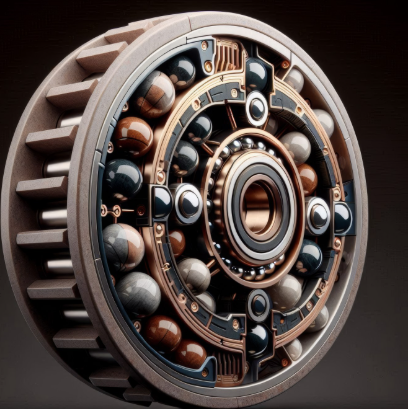Ten Tips for Proper Bearing Maintenance
Bearings are essential components in various machinery and equipment, ensuring smooth operation and longevity. Proper maintenance of bearings is crucial to prevent failures and extend their lifespan. Here are ten tips for effective bearing maintenance that will help you keep your equipment running smoothly.
———————————————————————————————————————————————————————————————————————————————————————–
————————————————————————————————————————————————————————————————————————————————————————-
1. Regular Inspections
Conduct regular inspections of your bearings to identify any signs of wear or damage. Look for unusual noises, vibrations, or temperature increases. Early detection of issues can prevent costly downtime and repairs.
2.Keep Bearings Clean
Dirt and contaminants can significantly reduce the lifespan of bearings. Ensure that the working environment is clean and that bearings are protected from dust and debris during installation and maintenance.
3. Proper Lubrication
Using the right lubricant is essential for reducing friction and wear. Follow the manufacturer’s recommendations for lubrication intervals and types. Regularly check lubricant levels and replace it as needed to maintain optimal performance.
4. Monitor Temperature
Bearings should operate within a specific temperature range. Excessive heat can indicate problems such as insufficient lubrication or misalignment. Use temperature monitoring devices to keep track of bearing temperatures and address any anomalies promptly.
5. Avoid Overloading
Overloading bearings can lead to premature failure. Ensure that your equipment operates within the specified load limits. Regularly check load conditions and adjust as necessary to prevent excessive stress on the bearings.
6. Vibration Analysis
Implement vibration analysis as part of your maintenance routine. This technique helps identify potential issues before they lead to failure. Abnormal vibration patterns can indicate misalignment, imbalance, or wear.
7. Correct Installation
Proper installation is critical for bearing performance. Follow the manufacturer’s guidelines for installation techniques to avoid damaging the bearings. Ensure that the bearings are seated correctly and that there is no misalignment.
8. Use Quality Bearings
Invest in high-quality bearings from reputable manufacturers. Quality bearings are designed to withstand the rigors of operation and provide better performance and longevity compared to cheaper alternatives.
9. Train Your Staff
Educate your maintenance team on proper bearing care and maintenance practices. Training can help prevent common mistakes and ensure that everyone understands the importance of bearing maintenance.
10. Schedule Regular Maintenance
Establish a regular maintenance schedule for your bearings. Consistent maintenance checks can help identify issues early and keep your equipment running efficiently. Use a maintenance management system to track inspections and service intervals.
—————————————————————————————————————————————————————————————————————————————————————————————————
Conclusion
By following these ten tips for proper bearing maintenance, you can significantly enhance the performance and lifespan of your bearings. Regular inspections, proper lubrication, and quality products are key to preventing failures and ensuring smooth operation.
At BMT Bearings, we offer a wide range of high-quality bearings designed for various applications. Our products are engineered for durability and performance, ensuring that your machinery operates at its best.
For more information or to place an order, please contact us!Choose BMT Bearings for reliable performance and quality you can trust!

